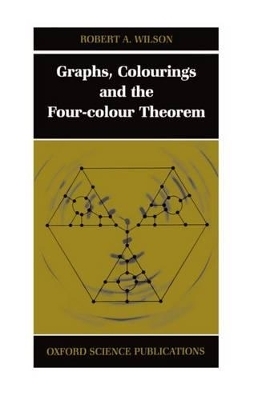
Graphs, Colourings and the Four-Colour Theorem
Seiten
2002
Oxford University Press (Verlag)
978-0-19-851061-1 (ISBN)
Oxford University Press (Verlag)
978-0-19-851061-1 (ISBN)
This textbook for mathematics undergraduates, graduates and researchers discusses the proof of the four-colour theorem - one of the most famous of the long-standing mathematical problems solved in the 20th century.
The four-colour theorem is one of the famous problems of mathematics, that frustrated generations of mathematicians from its birth in 1852 to its solution (using substantial assistance from electronic computers) in 1976. The theorem asks whether four colours are sufficient to colour all conceivable maps, in such a way that countries with a common border are coloured with different colours.
The book discusses various attempts to solve this problem, and some of the mathematics which developed out of these attempts. Much of this mathematics has developed a life of its own, and forms a fascinating part of the subject now known as graph theory.
The book is designed to be self-contained, and develops all the graph-theoretical tools needed as it goes along. It includes all the elementary graph theory that should be included in an introduction to the subject, before concentrating on specific topics relevant to the four-colour problem.
Part I covers basic graph theory, Euler's polyhedral formula, and the first published false `proof' of the four-colour theorem. Part II ranges widely through related topics, including map-colouring on surfaces with holes, the famous theorems of Kuratowski, Vizing, and Brooks, the conjectures of Hadwiger and Hajos, and much more besides. In Part III we return to the four-colour theorem, and study in detail the methods which finally cracked the problem.
The four-colour theorem is one of the famous problems of mathematics, that frustrated generations of mathematicians from its birth in 1852 to its solution (using substantial assistance from electronic computers) in 1976. The theorem asks whether four colours are sufficient to colour all conceivable maps, in such a way that countries with a common border are coloured with different colours.
The book discusses various attempts to solve this problem, and some of the mathematics which developed out of these attempts. Much of this mathematics has developed a life of its own, and forms a fascinating part of the subject now known as graph theory.
The book is designed to be self-contained, and develops all the graph-theoretical tools needed as it goes along. It includes all the elementary graph theory that should be included in an introduction to the subject, before concentrating on specific topics relevant to the four-colour problem.
Part I covers basic graph theory, Euler's polyhedral formula, and the first published false `proof' of the four-colour theorem. Part II ranges widely through related topics, including map-colouring on surfaces with holes, the famous theorems of Kuratowski, Vizing, and Brooks, the conjectures of Hadwiger and Hajos, and much more besides. In Part III we return to the four-colour theorem, and study in detail the methods which finally cracked the problem.
Preface ; 1. INTRODUCTION ; 2. Basic Graph Theory ; 3. Applications of Euler's formula ; 4. Kempe's approach ; 5. OTHER APPROACHES TO THE FOUR-COLOUR THEOREM ; 6. Maps on surfaces with holes ; 7. Kuratowski's theorem ; 8. Colouring non-planar graphs ; 9. OVERVIEW ; 10. Reducibility ; 11. Discharging ; Bibliography ; Index
| Erscheint lt. Verlag | 24.1.2002 |
|---|---|
| Zusatzinfo | numerous figures |
| Verlagsort | Oxford |
| Sprache | englisch |
| Maße | 161 x 241 mm |
| Gewicht | 351 g |
| Themenwelt | Mathematik / Informatik ► Mathematik ► Graphentheorie |
| ISBN-10 | 0-19-851061-6 / 0198510616 |
| ISBN-13 | 978-0-19-851061-1 / 9780198510611 |
| Zustand | Neuware |
| Haben Sie eine Frage zum Produkt? |
Mehr entdecken
aus dem Bereich
aus dem Bereich
Numbers and Counting, Groups, Graphs, Orders and Lattices
Buch | Softcover (2023)
De Gruyter (Verlag)
CHF 89,95
